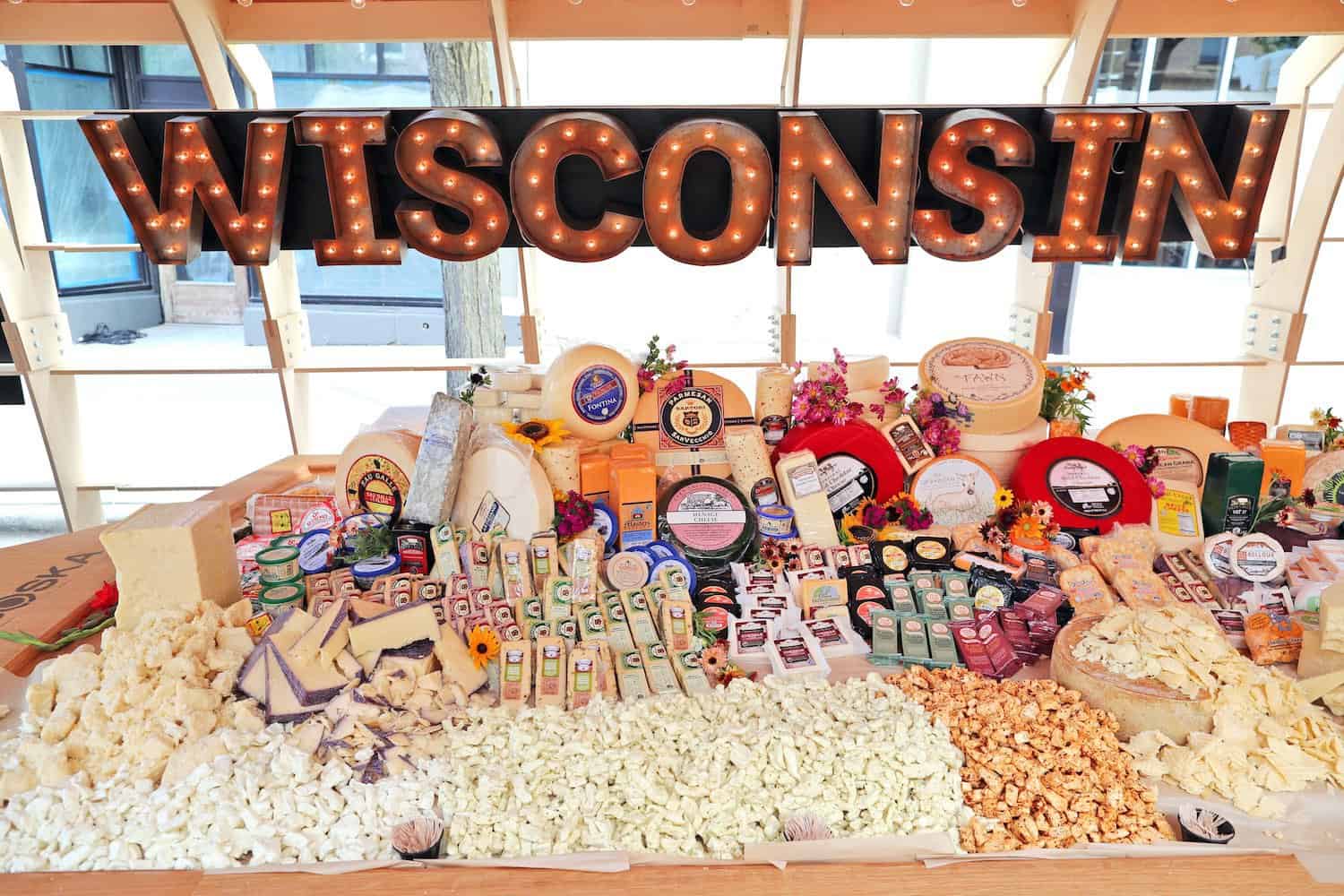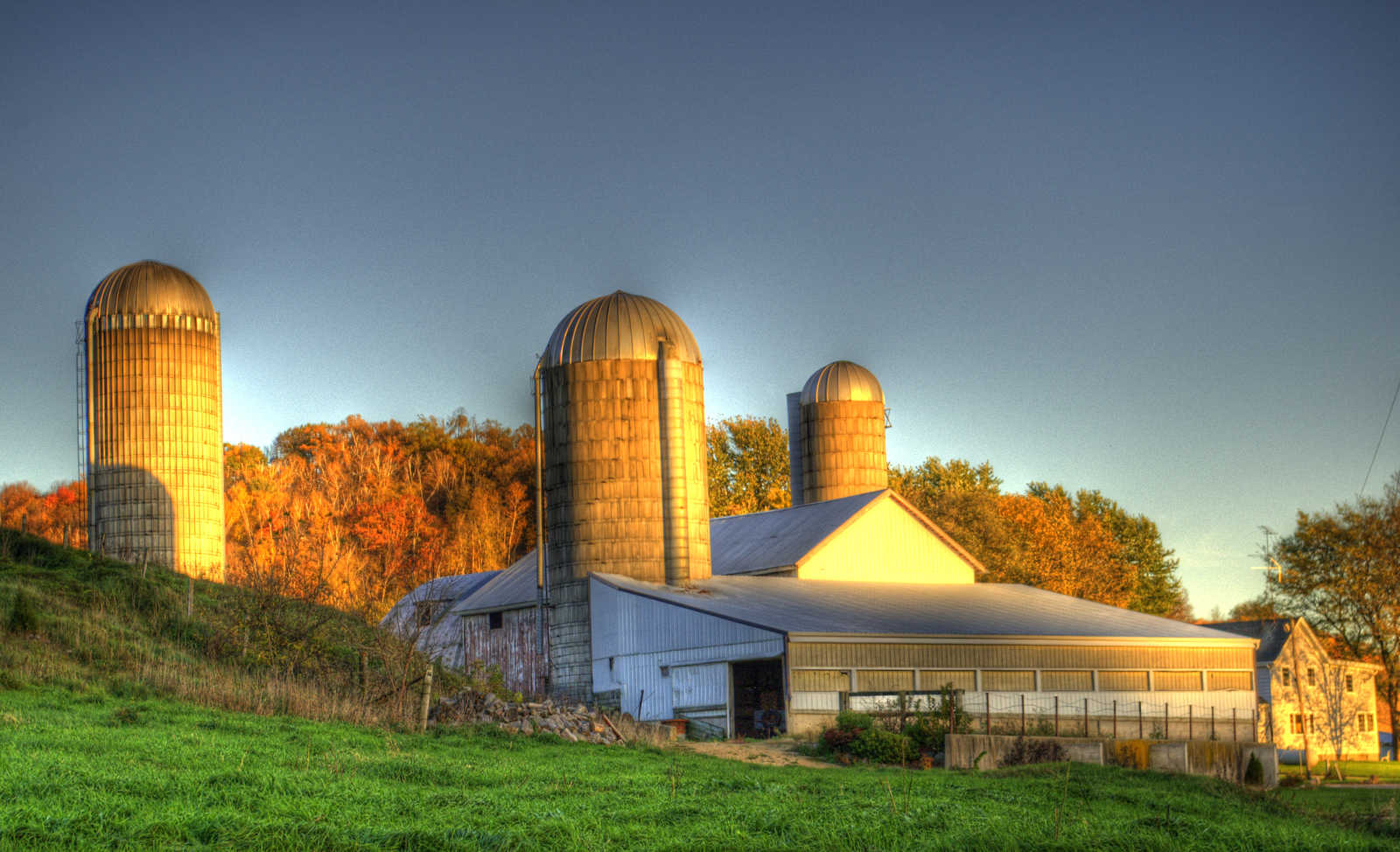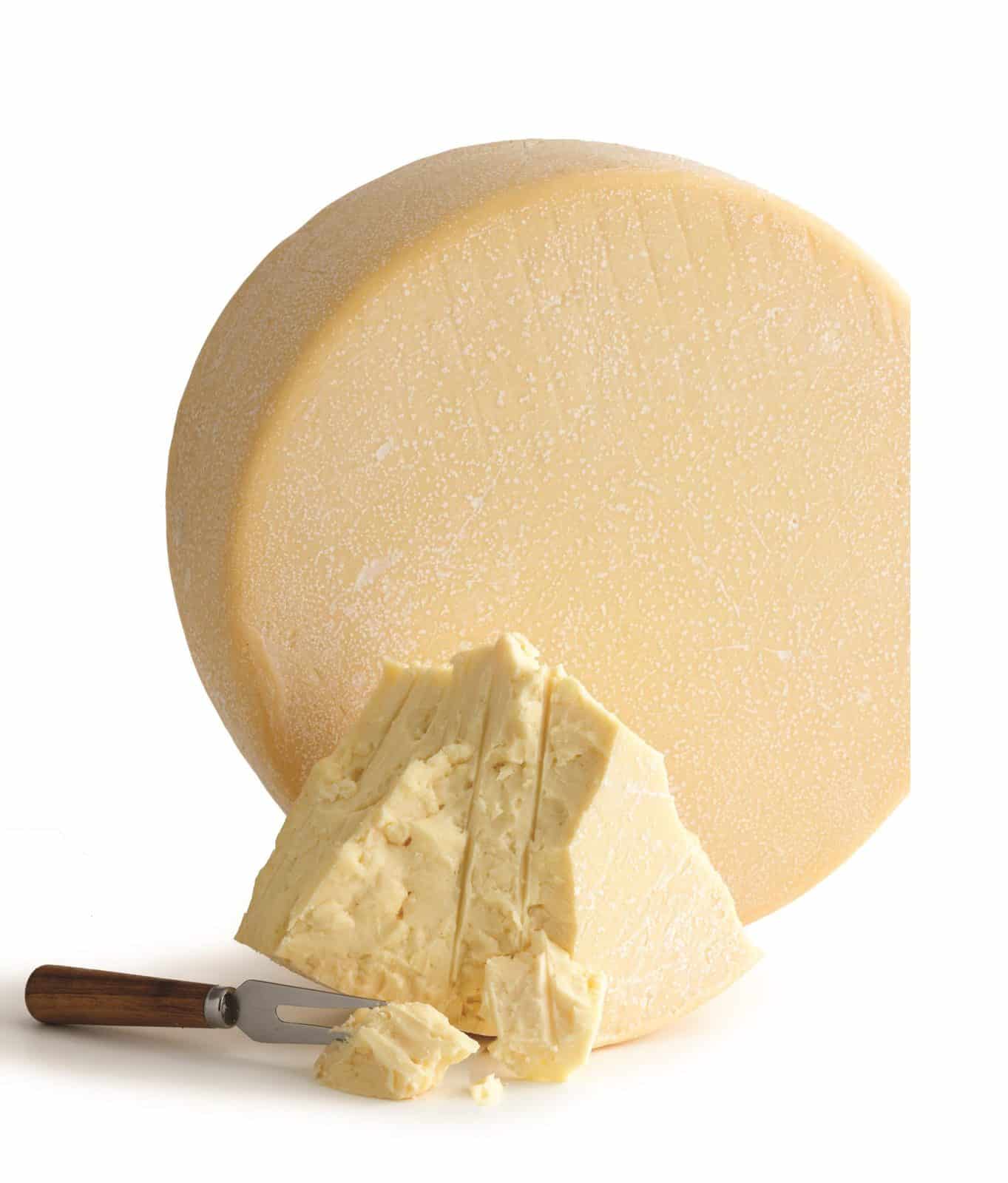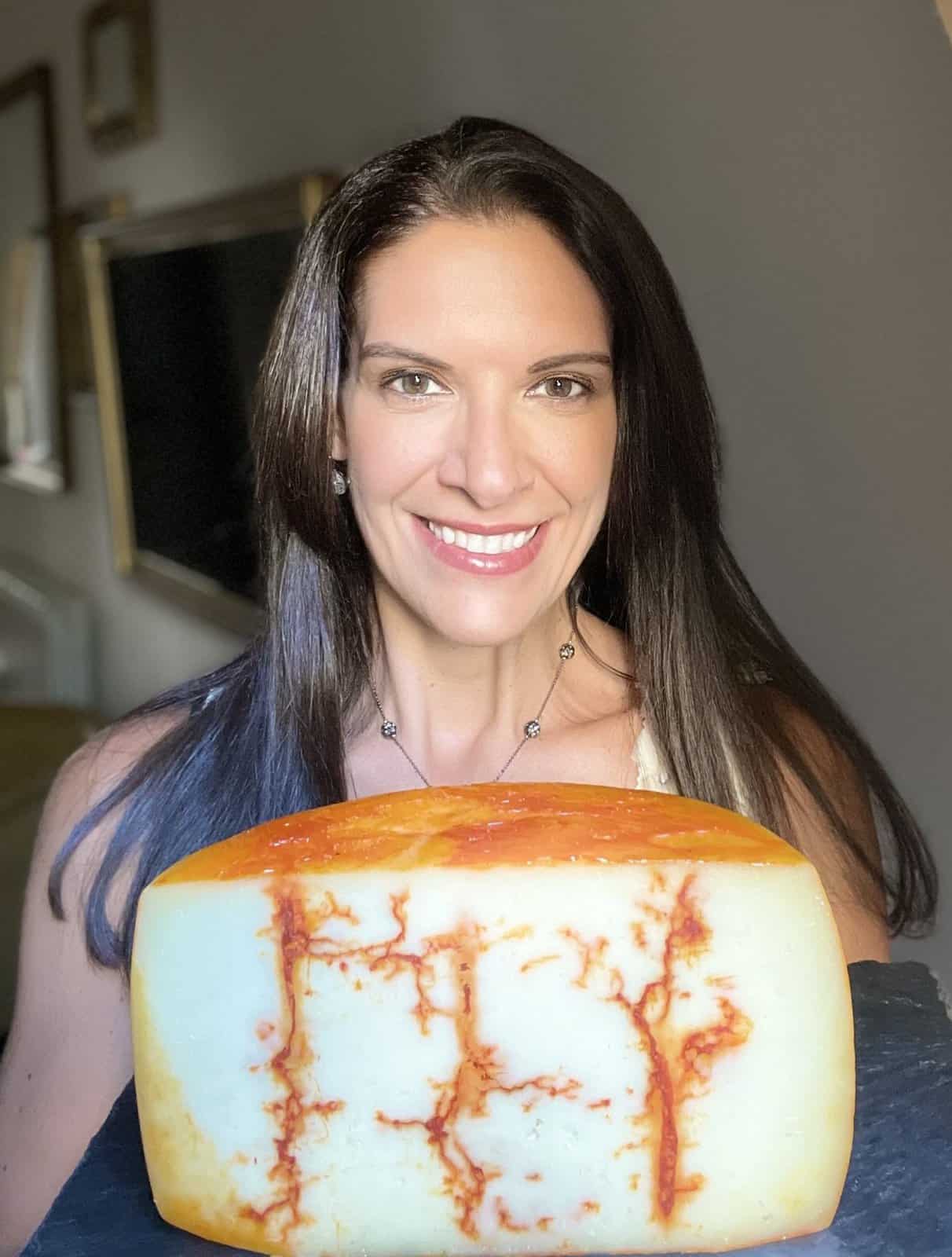
From classic cheddars and fried curds to American originals and artisanal wheels, Wisconsin’s cheese scene offers an impressive breadth of options for turophiles of every ilk. Any doubts about Wisconsin’s status on the global cheese map are quickly quelled in light of recent facts and figures: America’s Dairyland won more awards than any other state or country at the 2018 World Championship Cheese Contest, and over the last 10 years has doubled its specialty cheese output, producing almost 800 million pounds—47 percent of the national total—in 2017.
“In Wisconsin, there is a real culture of innovation, so cheesemakers are continuously challenging each other to come up with something that’s better, something that’s different,” says Suzanne Fanning, vice president of marketing communications for Dairy Farmers of Wisconsin. “It’s really kind of amazing. They’re coming out with some spectacular and unexpected cheeses.”
The dairy industry is the state’s largest—four times as large as oranges are to Florida, and six times as large as potatoes are to Idaho, Fanning emphasizes. It is the only state in the country that requires commercial cheesemakers to earn a license, and it’s home to the elite, rigorous Wisconsin Master Cheesemaker Program, which gives experienced cheesemakers the opportunity to specialize and become certified in specific styles.

The state is also home to a renowned dairy science department at the University of Wisconsin–Madison, as well as the Center for Dairy Research. “It’s basically like a CSI crime lab for cheesemaking,” explains Andy Hatch, co-owner of Uplands Cheese in Dodgeville and a graduate of the dairy science program. “They solve mysteries and troubleshoot problems, come up with new recipes … it’s about 30 to 40 full-time staff, from cheesemakers to PhD scientists.”
Hatch, whose Pleasant Ridge Reserve is the among the most decorated cheeses in American history, says there’s no other place in the world he’d rather make cheese than southern Wisconsin. “We have that depth of tradition and infrastructure, but we also have a progressive, innovative, forward-thinking approach.” He points out that many historic European cheesemaking regions remain focused on what was done in the past, with regulations dictating exactly how you can and can’t make certain styles of cheese. “There’s a lot of power in that tradition,” he says, “but I would rather be making cheese someplace where I can make those decisions myself and evolve.”
Best Cheesemakers of Wisconsin
Klondike Cheese Co.
With six Wisconsin Master Cheesemakers on staff, Klondike Cheese employs more of these prestigious experts in one location than any other company in the state. Five of them are members of the Buholzer family, whose history with Wisconsin cheesemaking dates to 1925, when Ernest Buholzer arrived in Green County from Switzerland and began making traditional Swiss wheels. His son and grandsons followed in his footsteps, founding Klondike in 1972.
Today, members of the third and fourth Buholzer generations still own and work together at the original plant site. “There have been a lot of changes throughout the years, with equipment, sanitation rules, and employee rules, but we always still have a base of knowledge to go to when new things come along,” says Klondike’s vice president of sales, Luke Buholzer, who grew up in a house above the cheese factory until the age of 12.
The company has made several different cheeses throughout its history, and began producing feta in 1988. “There was not enough high-quality domestic feta being made then,” says Buholzer. “Now, on a normal production day, we make 110,000 pounds of it.” Available in a traditional style and several flavored varieties, it is the company’s best-selling cheese—a fact that Buholzer attributes to its consistent quality and flavor.
Klondike also makes Muenster, Brick, and Havarti, and recently built a new plant to expand on their production, with an eye toward exposing more Americans outside of the Midwest to Brick, a Wisconsin original. “We want to get the Brick out there to people who’ve never seen or heard of it,” explains Buholzer. “We don’t want to make every kind of cheese for a few customers; we want to make a few cheeses for all types of customers.”
Sartori
This Wisconsin maker has captured the nation’s (and increasingly, the world’s) attention with award-winning cheeses that combine Italian tradition, American innovation, and local Wisconsin milk. Among the company’s many accolades: Espresso BellaVitano and Pastorale Blend both won Best in Class and placed in the top 20 at the 2018 World Championship Cheese Contest. Sartori SarVecchio is also the most decorated American-made parmesan.

The roots of this family business go back to the late 1920s, when Italian immigrant Paolo Sartori took a job at Chicago’s Stella Cheese. After learning the ins and outs of the industry, he and a colleague founded their own corporation, S&R Cheese, in Plymouth, Wis., in 1939. Renamed Sartori in 1996, the company is now run by Paolo’s grandson, Jim, whose children also play a role in the business. “Cheese was very much a part of our upbringing,” says brand ambassador Maria Sartori. “[It] was always set out to taste, smell, discuss, and eat as an appetizer before a family dinner.”
Sartori currently produces just over a half dozen types of cheese, experimenting with some goat’s and sheep’s milk varieties on a smaller scale. In addition to its Italian-style varieties, such as Fontina and Asiago, the company has developed several Sartori originals, including BellaVitano Gold, the base for a highly successful line of flavored cheeses.
“Our family’s Italian heritage will always have an underlying influence in the cheese we produce, but we also understand the need to evolve the breadth of our portfolio to meet ever-changing wants and needs,” explains Maria Sartori. She adds, “I am so proud of the hard work that my great-grandfather, grandfather, dad, and now brother have put into this growing business, and I’m excited to watch it grow for hopefully many generations to come.”
Hidden Springs Creamery
Hidden Springs Creamery owner Brenda Jensen describes her love for her sheep, their milk, and farmstead cheesemaking as “kind of like an addiction.” It’s a passion she discovered somewhat unexpectedly in 2001, after her husband came home one day with 50 sheep. Jensen, who holds an MBA and has a background in sales and marketing, grew up on a hobby farm but had no prior cheesemaking experience.
The exceptional quality of that sheep’s milk inspired her to transform it into something of her own. With input from consultants and the support of the now-shuttered Wisconsin Dairy Business Innovation Center, she ventured into cheesemaking, beginning with a fresh cheese called Driftless.

Goat cheese with lavender
Hidden Springs’ herd of grass-fed East Friesian and Lacaunes has since grown to around eight hundred, and Jensen and a team of just three work together on the 75-acre farm in southwest Wisconsin to produce about eight different cheeses, plus several flavored varieties of Driftless.
The area is an ideal place to raise sheep. “I’ve got good pastures, rolling hills…it reminds me a lot of the French countryside,” says Jensen. “The sheep are all calm and content. We treat them very well, and every year we try to improve their lives. We believe if we take care of them, they’ll take care of us.”
Jensen employs a seasonal breeding system that enables Hidden Springs to make cheese all year long, and says her background in business has helped her manage the logistical and financial aspects of running the creamery. But she remains humble about her success. “We just wanted to make good cheese and have healthy animals, and everything after that is great.” She adds: “There’s that magical side, too. I still get goose bumps sometimes when I smell the sheep’s milk as it’s warming.”
Best Cheeses of Wisconsin
Brick
Klondike Cheese Co.
Monroe, Wis.
Brick cheese—named for the bricks originally used by cheesemakers to squeeze moisture from curds, and the cheese shape that resulted—was developed in Wisconsin in the late 19th century and remains popular today in the Midwest. Klondike’s version is white, rindless, and squidgy in texture, with a clean, mild, slightly salty flavor. Less pungent than smear-ripened brick styles, this version is particularly versatile. “It’s full in flavor, but not over-the-top, so it’s not going to offend anyone,” says Luke Buholzer, Klondike’s vice president of sales.
EWE CALF to be KIDding
Hook’s Cheese Company
Mineral Point, Wis.
Feeling blue? This wheel from Hook’s Cheese might help. Although it might take a minute to get the joke, this award-winning cheese is (natch) made from a combination of sheep’s, cow’s, and goat’s milk. This ensures a delicate balance of cream and tang and a slightly crumbly texture laced with piquant blue veining.
Goat Milk Raclette
LaClare Family Creamery
Malone, Wis.
As temperatures drop and fall approaches, we start craving roaring fires and heartier meals. Enter Goat Milk Raclette: Made to be melted over bread or potatoes, the flavor of this Alpine-inspired wheel begins with bright fruit notes before transitioning to hints of garlic and toasted pine.
Havarti
Edelweiss Creamery
Monticello, Wis.
With an aroma reminiscent of buttered popcorn, this rindless crowd-pleaser has a supple yellow paste with tiny eyes scattered throughout the interior. Its creamy, mildly sweet-yet-tangy flavor and fudgy texture render it especially versatile, whether enjoyed on its own, melted on a sandwich, or diced in a salad.
Marinated Fresh Mozzarella
Crave Brothers Farmstead Cheese
Waterloo, Wis.
Made from fresh cow’s milk produced on-site at this Wisconsin dairy, Marinated Fresh Mozzarella starts with a base of ciliegene (“cherry-size”) mozzarella pieces that are then submerged in a blend of oil, Italian seasonings, and garlic. Fondly dubbed an “appetizer in a cup,” this marinated marvel is perfect for an antipasto platter.
Parmesan
BelGioioso
Green Bay, Wis.
Aged over 10 months, BelGioioso Parmesan begins as raw cow’s milk gathered from local Wisconsin farmers. The aroma of pineapple carries through in the sweet, pleasantly salty flavor with a nutty finish. The golden-yellow paste is firm, smooth, and somewhat granular, but less craggy than Italian counterpart Parmigiano Reggiano.
Pavino
Emmi Roth
Monroe, Wis.
Weighing 14 pounds, this washed-rind, Alpine-style wheel is brothy and full-bodied, with nutty, earthy undertones. Aged for a minimum of nine months, Pavino has a firm, slightly elastic texture and mouthfeel. The straw-colored paste is studded with crunchy granules of crystallized amino acids.
PAIR IT: Try Pavino melted over roasted Brussels sprouts or asparagus, or as the base for a rich fondue.

Sartori BellaVitano Gold
Sartori
Antigo, Wis.
Aged for a minimum of nine months, BellaVitano Gold is a Sartori original that debuted in 1999. Inspired by traditional Italian farmstead cheeses, it’s now the base for several flavored varieties in the Sartori Reserve lineup. With a fruity aroma and firm, fudgy texture, Bellavitano Gold is nutty, creamy, and robust, with a touch of sweetness present in the long finish. Its rich, intense flavor, together with the crunchy granules in the paste, reminds us of a savory version of a Butterfinger candy bar.
Shepherd’s Blend
Carr Valley Cheese
La Valle, Wis.
This Wisconsin creamery has created a name for itself as one of the most decorated cheese companies in the world—and this award-winner has been a part of the lineup since 1998. Its buttery richness comes from a careful ratio of sheep’s, goat’s, and cow’s milk, which meld together and yield nutty flavors with hints of barnyard and a tangy kick. While delicious on its own, an easy melting ability makes it a classy addition to a grilled cheese.
Wischago
Hidden Springs Creamery
Westby, Wis.
This Manchego-style raw sheep’s milk wheel has a striking basket-weave rind coated in a layer of dark brown wax. Aged from six to 12 months, it’s milky, rich, and mildly gamy, with a gently piquant finish. The firm, white paste is smooth and buttery in younger wheels, becoming drier and more crumbly as the cheese matures.





Have been ordering from Sartori for a few years and have always been very happy with the quality and shipping. One order was delayed in route due to a weather incident in Houston for a week. Sartori replaced the order with no problem. THANK YOU